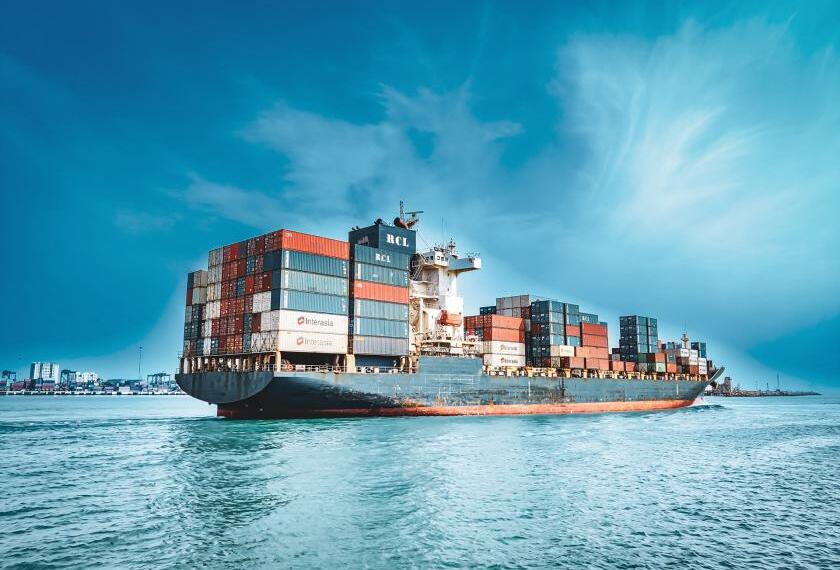Abstract
Thai exports in May contracted at a lower rate than expected. The value of exports stood at USD 24,340.9 million, marking the eighth consecutive month of contraction at -4.6% year-on-year (YOY). However, this decline was smaller than the -7.6% YOY contraction in the previous month and better than market estimates. Excluding gold, exports dropped by the same rate of -4.6% YOY. Notably, exports of agricultural products contracted by -27% YOY, while exports of manufacturing products expanded for the first time in eight months. Exports to most key trading partners improved, except for China. Thai trade remained at a deficit for the second consecutive month as imports declined at a slower rate than exports.
Thai exports in May contracted at a lower-than-anticipated rate.
The value of Thai exports in May 2023 stood at USD 24,340.9 million, marking an 8 consecutive months contraction at -4.6%YOY. Such a drop stalled from -7.6%YOY in the prior month and also performed better than market estimates (Reuters poll reported -8% contraction). Excluding gold (a product that does not reflect actual international trade conditions), exports dropped by a similar rate of -4.6%YOY, compared to -9.3%YOY in April. Moreover, in terms of the seasonally adjusted month-on-month growth, exports in May grew by 3.0%MOM_sa, reflecting a more positive outlook.
Exports of agricultural products contracted for the first time in 4 months. while, exports of manufacturing products expanded for the first time in 8 months.
Exports of most key merchandise contracted in May, in which (1) Exports of agricultural products shrank considerably by -27%YOY, a first contraction in 4 months, after expanding by 23.8% prior. Notable drags included exports of fresh/ chilled/ frozen/ dried fruits, tapioca (cassava) products, and rubber with contractions of -54.8%, -41.7%, and -37.2%, respectively, partly due to slowing exports to China. (2) Exports of agro-industrial products continued to fall for 2 consecutive months with a drop of -0.6%. However, such a drop slowed from the -12.0% contraction in the prior month. Exports of animal or vegetable fats and oil particularly slowed growth with a contraction of -63%, worsening from -34.3% in the prior month. (3) Exports of mining and fuel products plunged by -39.9%, deteriorating from -13.7% in the prior month, due to refined fuel exports that dropped by -40.9% compared to -17.2% in April; and (4) Exports of principle manufacturing products (account for 78.6% of total exports in 2022) reverted to a first expansion in 8 months at 1.5% following exports of aircraft, spacecraft and parts that expanded by 524.5%, partly due to the low base. Excluding gold, weaponry, and aircraft, which are products that do not reflect actual international trade conditions, exports of principle manufacturing products stood at 0%. Nevertheless, exports of semiconductor devices, transistors, and diodes continued to improve by 87.8%, marking an 11 consecutive months growth. While, exports of plastic beads plummeted by -21.4%, representing an 11 consecutive months decline.
Exports to most key destinations improved, thus helping offset the weakening export momentum to China.
Exports to nearly all key trading partner markets reverted to an expansion in May after contracting in the prior month. However, the momentum from China contracted considerably, in which (1) Exports to the US expanded by 4.2% after falling by -9.6% in the prior month, (2) Exports to EU28 increased by 9% compared to the stabilizing growth in the previous month, (3) Exports to the Middle East improved to 11.3% after seeing the first contraction in over 12 months at -16.5% in the prior month, (4) Exports to ASEAN5 remained stable at 0.1% after plummeting by -17.6% in the prior month. Meanwhile, exports to CLMV continued to fall by -17.3%, a rate similar to the prior month. (5) Exports to Japan stalled to -1.8%, improving from -8.1% in the prior month; and (6) However, exports to China contracted by -24% after robustly expanding by 23% in the prior month. Such a decline was due to the high base (the value of Thai exports to China in May 2022 was at a historic high since data collection in 2010) and slowing Chinese demand as reflected by the value of exports to China in May (seasonally adjusted) that was lowest since the beginning of 2023.
Thai trade remained at a deficit for the second consecutive month as exports saw a sharper contraction than imports.
The value of imports in May stood at USD 26,190.2 million, declining by -3.4%, continuing from the -7.3%YOY contraction in the prior month. Excluding gold (a product that does not reflect actual international trade conditions), imports weakened by -1.7%, contracted less than the prior month of -7.3% . Imports of refined fuel (-13.1%) and raw materials and intermediate products (-11.9%YOY) led the decline. Meanwhile, imports of capital goods expanded for the first time in 3 months (17.6%YOY). As the value of exports saw a sharper contraction than imports, the customs basis trade balance remained at a deficit for the second consecutive month at USD -1,849.32 million in May, more deficit than USD -1,471.7 million in the prior month.
SCB EIC cuts its Thai 2023 export forecast to 0.5% (from 1.2%) as support from China slowed faster than anticipated…



